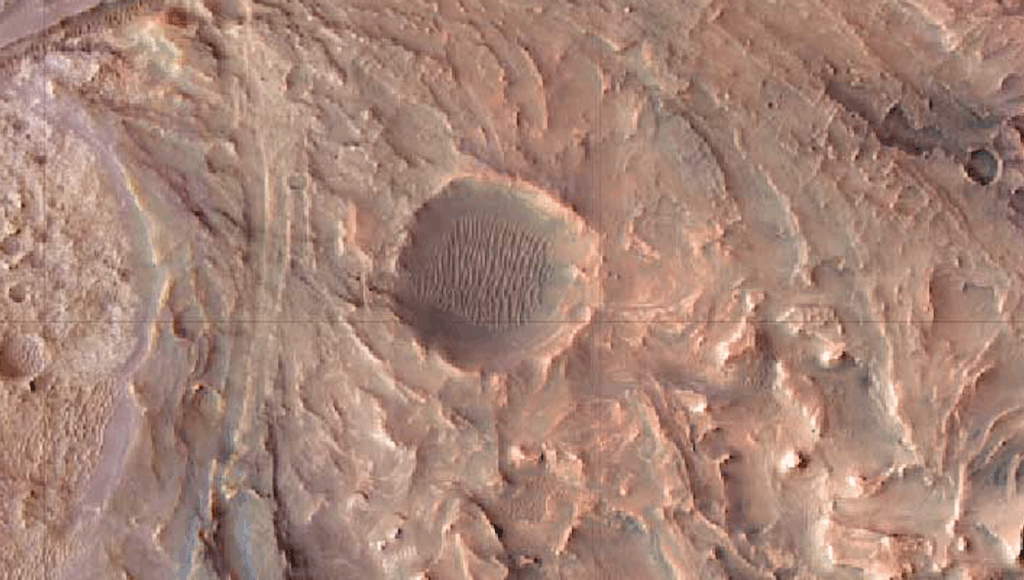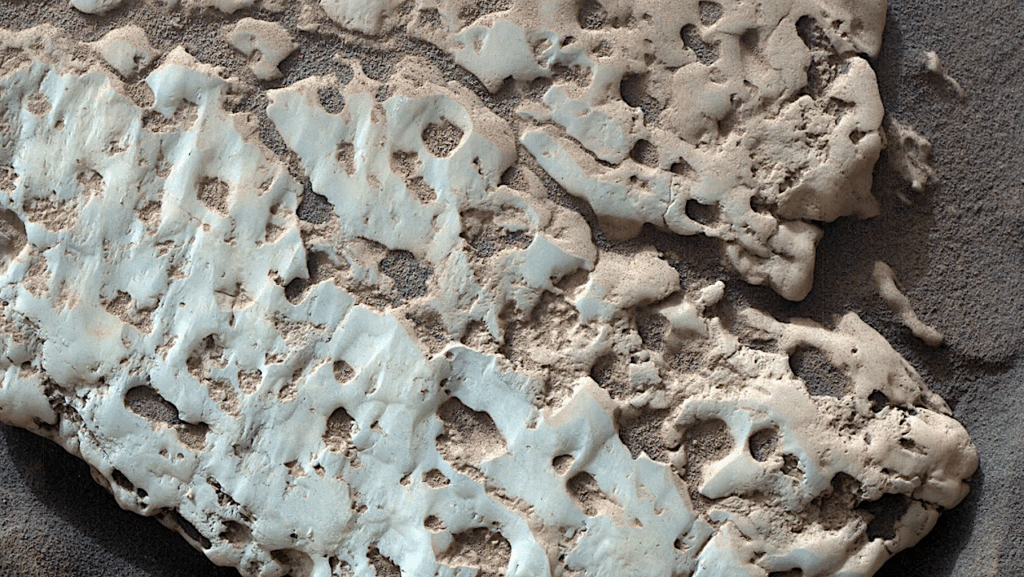A Nitrogen-rich Atmosphere On Ancient Mars Consistent With Isotopic Evolution Models

The ratio of nitrogen isotopes in the Martian atmosphere is a key constraint on the planet’s atmospheric evolution. However, enrichment of the heavy isotope expected due to atmospheric loss from sputtering and photochemical processes is greater than measurements.
A massive, multi-bar early CO2-dominated atmosphere and recent volcanic outgassing have been proposed to explain this discrepancy, and many previous models have assumed atmospheric nitrogen rapidly reached a steady state where loss to space balanced volcanic outgassing. Here we show using time-dependent models that the abundance and isotopic composition of nitrogen in the Martian atmosphere can be explained by a family of evolutionary scenarios in which the initial partial pressure of nitrogen is sufficiently high that a steady state is not reached and nitrogen levels gradually decline to present-day values over 4 billion years.
Our solutions do not require a multi-bar early CO2 atmosphere and are consistent with volcanic outgassing indicated by both geologic mapping and the atmospheric 36Ar/38Ar ratio. Monte Carlo simulations that include these scenarios estimate that the partial pressure of N2 was 60 – 740 mbar (90% confidence, with a median value of 310 mbar) at 3.8 billion years ago when the valley networks formed. We suggest that such a high nitrogen partial pressure could have contributed substantially to warming on early Mars.
Renyu Hu, Trent B. Thomas
Comments: Nature Geoscience, published online on February 10, 2022, this https URL
Subjects: Earth and Planetary Astrophysics (astro-ph.EP); Atmospheric and Oceanic Physics (physics.ao-ph); Geophysics (physics.geo-ph)
DOI: 10.1038/s41561-021-00886-y
Cite as: arXiv:2202.04825 [astro-ph.EP] (or arXiv:2202.04825v1 [astro-ph.EP] for this version)
Submission history
From: Renyu Hu
[v1] Thu, 10 Feb 2022 04:07:36 UTC (16,617 KB)
https://arxiv.org/abs/2202.04825
Astrobiology








